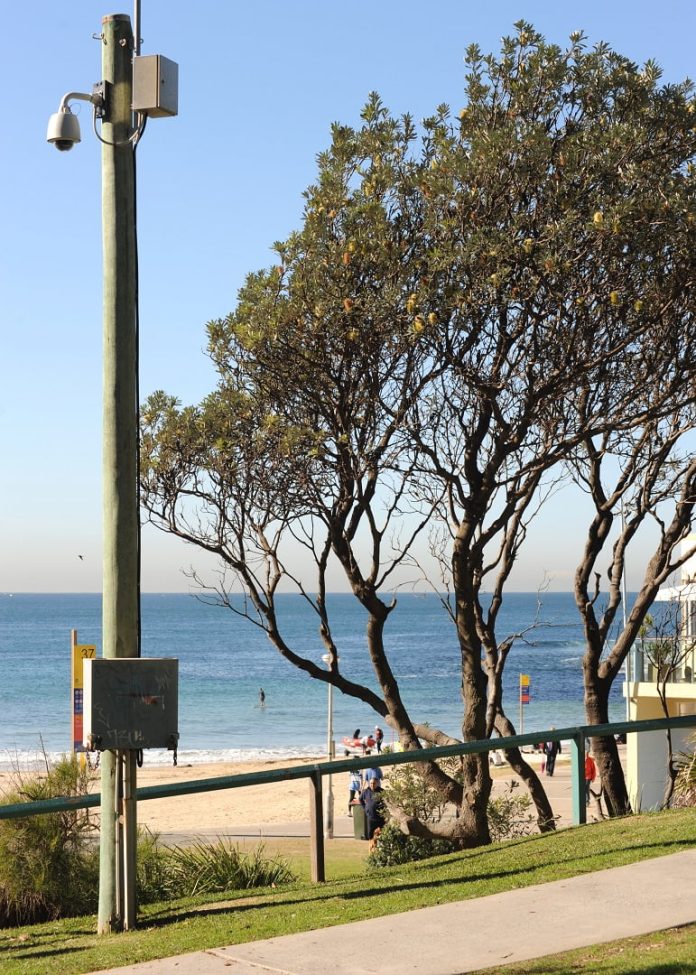WE have components of a security system mounted on a pole exposed to weather – there are ventilation holes in the box at the bottom but being near the coast we still have issues with salty night mist getting in and then drying into crystals during the day and attracting moisture when it rains.
We’ve not had any issues with control boards yet but the terminations, which are obviously low-quality metal are beginning to corrode. Without going full IP67, are there any suggestions you could give that might alleviate our problem at minimal cost?
A: Salt air and salt water eat metals – they’ll get 316L (low carbon) to bleed rust after a couple of months of full exposure. Your cables are copper, which has better resistance, but electrical terminations can be aluminium or metal alloys, and if mild steel or stainless termination screws are used alongside them, there will be galvanic corrosion.
The worst combination of metals is probably aluminium and stainless steel – left to their own devices, the stainless will turn aluminium into powder. Your boards may already be conformal coated and if not, they ought to be. You can’t attempt this with the controllers in the box, however. It’s something you need to build into a replacement and maintenance schedule.
Protecting aluminium and stainless connection points can be handled with simple techniques like painting screws with Loctite (let it dry completely before screwing in) or by using plastic spacers between surfaces but these fixes will be tedious and while they might work very well for non-conducting metal-to-metal connections, they may not be applicable for delicate termination strips.
To protect exposed terminations in existing applications, we’d be breaking out the Vaseline (or a dielectric grease). In challenging marine environments, a thin layer of Vaseline is an electrical connection’s best friend, protecting metal against condensation that will set up a process of galvanic corrosion.
Vaso has a melting point of around 37 degrees C, so try to give the box some additional shade if it’s located in the open, don’t overdo the application and check to see if it’s melting and pooling at the bottom of the housing. Grease has a higher melting temperature but make sure you don’t use a conductive grease as it may interfere with your connections.
As a caveat, while Vaseline is insoluble in water and chemically inert, its fumes can burn when heated to a liquid and supplied with a wick and a naked flame, so screen vents to ensure the housing can’t collect wind-blown organic matter.
In marine applications we’d be using IP-rated enclosures but IP67 is likely to be overkill. An IP65 enclosure can withstand water jets projected by a 6.3mm nozzle pushing 12.5L per minute from a distance of 3m from any direction. An IP66 rated enclosure can handle 100L of water per minute from a 12.5mm nozzle at 3m from any direction. Meanwhile, an IP67-rated enclosure must be able to protect against the ingress of water for 30 minutes when the top of the enclosure is at least 15cm below the surface and the bottom of the enclosure is at least 1m below the surface.
In the future, we’d be looking at IP66-rated enclosures with NEMA 4 rating against ingress of dust and organic matter, and depending on the height of the enclosure on the pole, we’d value IK09 or IK10 impact ratings above IP67 or IP68, unless the application is prone to flooding in the first instance, or the enclosure is permanently immersed in the second.
Serious enclosures large enough to support multiple subsystems in the field are expensive – a 1000mm (L) x 600mm (W) x 250mm (D) IP66-rated box might cost $300-400. You’ll need to factor that expense into TCO and try to buy enclosures in bulk if you do a lot of external applications.








